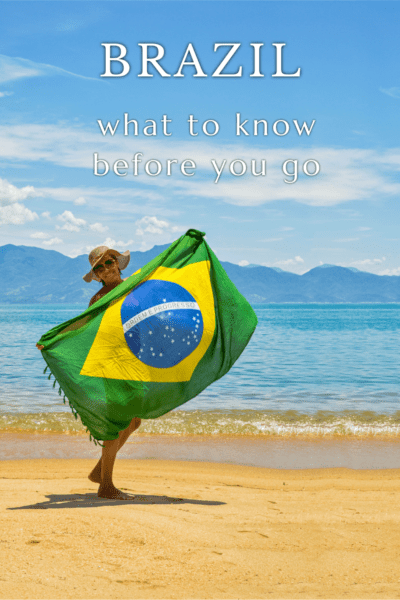Brazil is a country that bursts with flavor and culture, from the vibrant cities of Rio and Sao Paulo to the stunning beaches of Ipanema and Copacabana and the remote villages along the Amazon River.
There’s so much to see and do in this South American powerhouse that planning a Brazil itinerary can be overwhelming. That’s why we’ve put together a list of 10 important things to know before visiting Brazil. So read on, get inspired, and start planning your next vacation!
1. Brazil’s visa policy is quite liberal
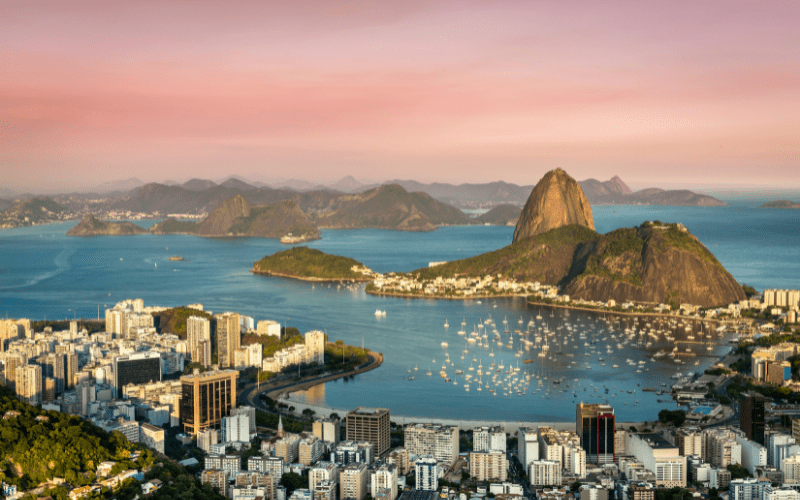
When we say that the overall visa policy of Brazil is quite liberal, we mean it. Brazil’s visa requirements depend on the nationality of a traveler. Travelers from most countries can visit Brazil on a visa-free basis, while nationals of South American countries may enter Brazil only with a valid ID on hand.
Only some travelers must obtain a relevant Brazilian visa. It depends on your reason for travel and how long you plan to stay in Brazil.
Most typical types of Brazil visas include the Visit Visa (VIVIS) and the Temporary Visa (VITEM).
The Brazilian Government also introduced an electronic visa for certain nationalities, but that system was suspended and is no longer in use.
Tourist visas for Brazil
Travelers to Brazil may apply for a Visit Visa (VIVIS) to enter Brazil for business, transit, and tourism-related purposes such as study, research, family reunions, teaching, business meetings, conferences, or making a stop before reaching the final destination.
Anyone with a VIVIS may plan a 90-day stay. For stays exceeding 90 days, you will need to obtain a Temporary Visa (VITEM). VITEM also entitles to take up work in Brazil under certain conditions.
You can find more information on the Brazil visa policy and current travel requirements on Evisa.Express.
Save these things to know before visiting Brazil for later
Pin it to Pinterest!

Current Brazil entry requirements
Currently, Brazil welcomes fully vaccinated foreign visitors. You must provide a coronavirus vaccination certificate to enter the country.
Entry to Brazil for unvaccinated travelers is allowed only for certain groups of travelers, including Brazilian citizens and permanent residents, and travelers who are not eligible for vaccination because of their age or some medical contraindications.
If you are coming from a country where the Covid-19 vaccination rate is relatively low (since they have low access to vaccinations), you do not need to be vaccinated to enter Brazil.
If you fall under one of the vaccination-exempt categories, instead of a vaccination certificate, you will need to provide proof of a negative test, either a PCR test 72 hours before boarding or an antigen test 24 hours beforehand.
That said, these policies can change quickly. When traveling during the pandemic, you should also consider buying travel insurance with COVID-19 coverage!
2. Brazil is huge
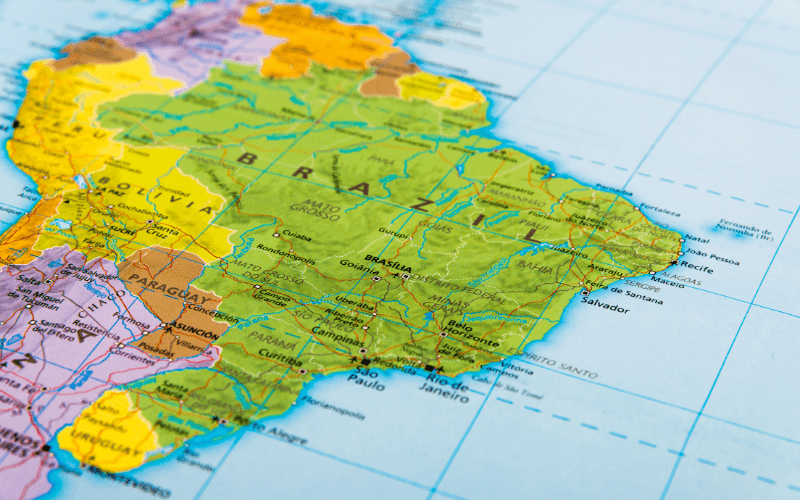
As the fifth largest country in the world, Brazil is incredibly diverse. It can pride itself on a variety of landscapes, including the Amazon rainforest, the Pantanal wetland, and the rocky coastline of the Atlantic Ocean.
Brazil is also home to a number of different cultures, including the native Brazilians. As a result of this diversity, Brazil is an incredibly interesting and unique country.
3. Brazilians are warm and welcoming

Brazil is also renowned for its friendly, hospitable people. Whether you’re visiting Rio de Janeiro for the Carnival celebrations or Sao Paulo for business, you’re sure to receive a warm welcome from the locals.
Brazilians are known for their love of music and dance, and they often enjoy spending time outdoors enjoying the warm climate. With its rich culture and hospitable people, Brazil is a wonderful place to visit.
4. Brazilian food is delicious and varied

As already established, Brazil is a country with a rich and diverse culture, and this is reflected in its cuisine too. It is also home to a wide variety of fruits and vegetables, as well as meats and seafood. You’re sure to find something you’ll love.
Brazilian dishes can be described as both flavorful and nutritious. Most traditional Brazilian recipes contain rice, beans, or manioc, a root vegetable from which they make farinha, a fine, yellowish flour. It’s not surprising that the country chose feijoada as its national dish, a stew made with black beans, pork, and beef.
Another popular dish that you should try when in Brazil is churrasco, which is the term for barbecued meats of all types. As you might expect, churrasco is served with rice and beans.
As for adult drinks, Brazil is known for its cachaça, made from fermented sugarcane juice and the most essential ingredient in a Caipirinha, Brazil’s national cocktail.
Brazilians also enjoy a variety of snacks, such as pastels (fried turnovers filled with cheese or meat) and coxinhas (deep-fried battered chicken).
5. You won’t get bored
Looking for something to do in Brazil? You won’t be bored here! From the Amazon rainforest to the beaches of Rio de Janeiro, there’s plenty to see and do in this country.
For starters, you can explore the world’s largest tropical rainforest, go hiking or camping in the Brazilian Highlands, or take a boat tour down one of the many rivers.
If you’re looking for a more urban experience, you can check out the cosmopolitan city of Sao Paulo, with its world-class museums and restaurants, or visit the world-famous Mutantes music festival.
Of course, no trip to Brazil would be complete without spending some time on the beach. Whether you’re soaking up the sun in Rio de Janeiro or surfing the waves in Florianopolis, you’re sure to have a blast.
6. The currency used in Brazil is the Brazilian Real
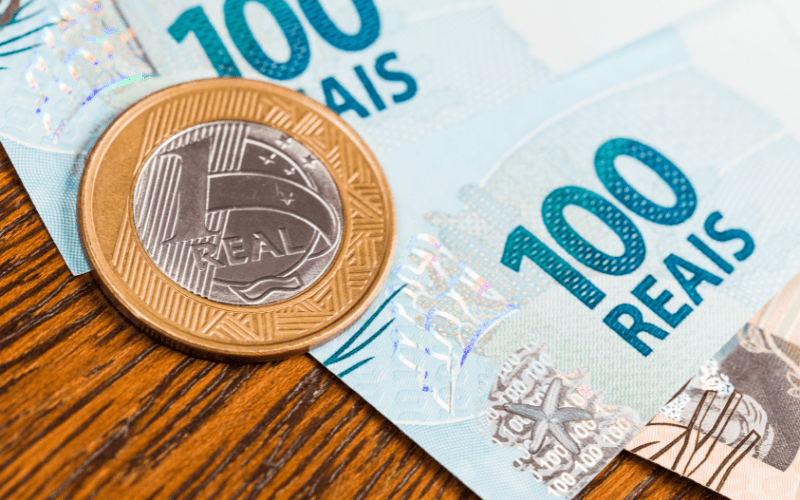
If you’re planning a trip to Brazil, it’s a good idea to take some Brazilian currency with you. The Brazilian real (BRL) is the official currency of Brazil, and it’s used for all transactions in the country.
You’ll be able to exchange your money for Brazilian reals at any Brazilian bank or currency exchange office. When you’re changing money, it’s important to keep an eye on the exchange rate so that you get the best deal possible.
You can also use your credit card or debit card to withdraw Brazilian reals from ATMs, although you may be charged a fee for doing so.
Whatever method you choose, make sure you have enough Brazilian reals to cover your expenses while you’re in Brazil!
7. Tipping isn’t expected in Brazil
In Brazil, service charges are usually included in the bill. Brazilians only consider giving extra if there was some special, nonstandard service. Acknowledging extra effort with a few extra reals is always appreciated
Here are some examples of when you might want to tip in Brazil:
- In restaurants, a 10% “serviço” service fee is often added to the bill. While there is no legal obligation to pay it, it’s customary to do so.
- Tipping is also common in bars and nightclubs, where it’s usual to leave R$10-R$20 per drink.
- In hotels, a 10% service charge is also often included in your bill. It’s customary to leave an additional tip of R$5-R$10 per day for the maid, and R$10-R$20 per day for the concierge if you use their services.
- Taxis are relatively inexpensive in Brazil, and tips are not expected. However, it’s common to round up the fare to the next real (for example, R$4.50 would become R$5.00).
- When taking a tour, it’s customary to tip the guide 10% of the cost of the tour, and the driver 5%.
ⓘ TIP: At the time of writing, the general rule of thumb is that 1 USD = 5 BRL.
8. The “best time to visit Brazil” varies
Because it’s such a huge country, Brazil experiences many different climates. So, the best time for visiting completely depends on what you want to see and do and the region you’re visiting.
Generally speaking, the best months to visit occur during the spring and autumn. In other words, March to May and September to November respectively.
These months offer milder weather conditions as opposed to the hotter temperatures found in December to February or the cooler temperatures of June to August.
It’s important to keep in mind that the southern, temperate parts of Brazil experience opposite seasons to the north. If you’re planning on visiting multiple regions, it’s best to check the local weather forecast before you go.
Whichever time of year you choose to visit, you’re sure to have an amazing experience in this passionate and vibrant country!
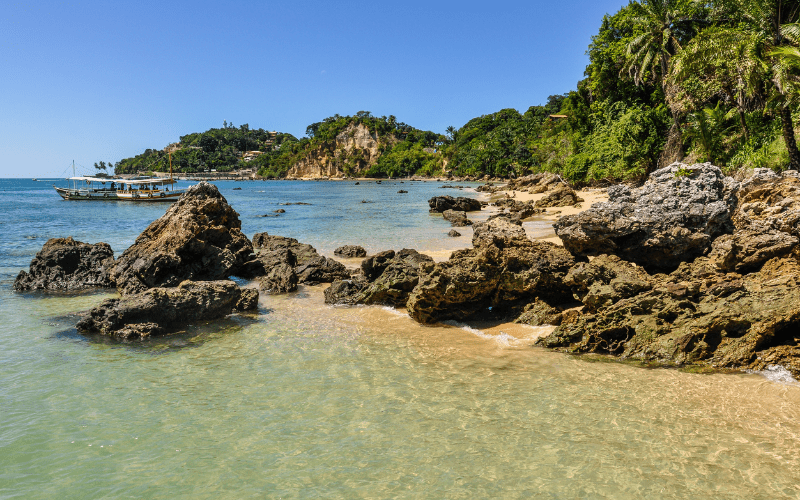
9. Not everyone speaks English
Don’t expect everyone you meet to speak English – Portuguese is Brazil’s official language. Between 95 and 99 percent of the population speaks the language, although many speak other languages as well, including Spanish, English, French, and German.
In addition, there are more than 180 indigenous languages spoken throughout Brazil. This has made Brazilian Portuguese is a unique dialect of the language that has been influenced by both African and Native American cultures.
As a result, Brazilian Portuguese often sounds quite different from European Portuguese.
10. Holidays are a Very. Big. Deal.
Brazil is a hugely popular tourist destination, and for good reason. With its stunning beaches, vibrant culture, and friendly people, it’s no wonder that so many people flock to Brazil each year.
However, this popularity can also be a downside, as big crowds and long lines are common at popular tourist destinations. If you’re planning a trip to Brazil, try to avoid peak times such as Christmas and Carnival.
Not only will you avoid the crowds, but you’ll also get to experience some of Brazil’s less-touristed gems.
Of course, even when you’re visiting Brazil at off-peak times, you’ll still find some crowds at popular attractions such as Sugarloaf Mountain or Christ the Redeemer statue. But if you’re willing to do some research and plan ahead, you can avoid the worst of the crowds and enjoy a more relaxed vacation in Brazil.
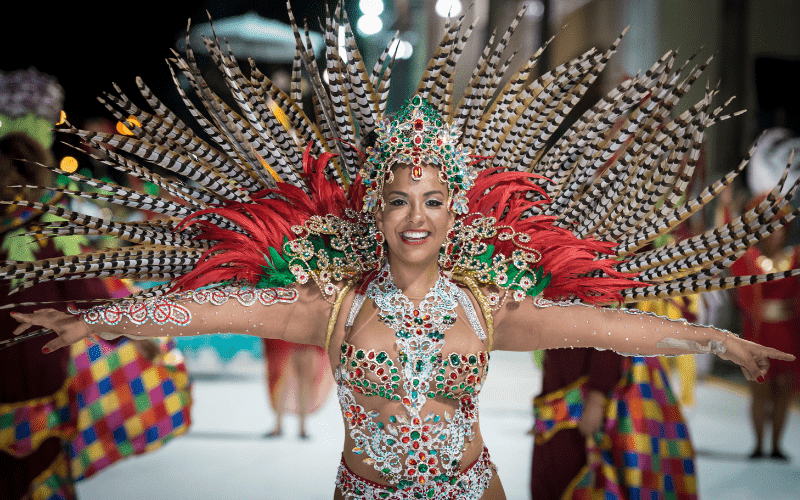
Ready to visit Brazil?
Now that you have all of the information you need, it’s time to start packing your bags and getting excited about your Brazilian adventure.
We hope this list of things to know before visiting Brazil has helped to better prepare you for your upcoming trip. If you can think of anything we’ve missed, please mention it below. We want everyone’s visit to be as enjoyable and stress-free as possible.!
Boa viagem! We can’t wait to hear about all of your amazing experiences in Brazil!

